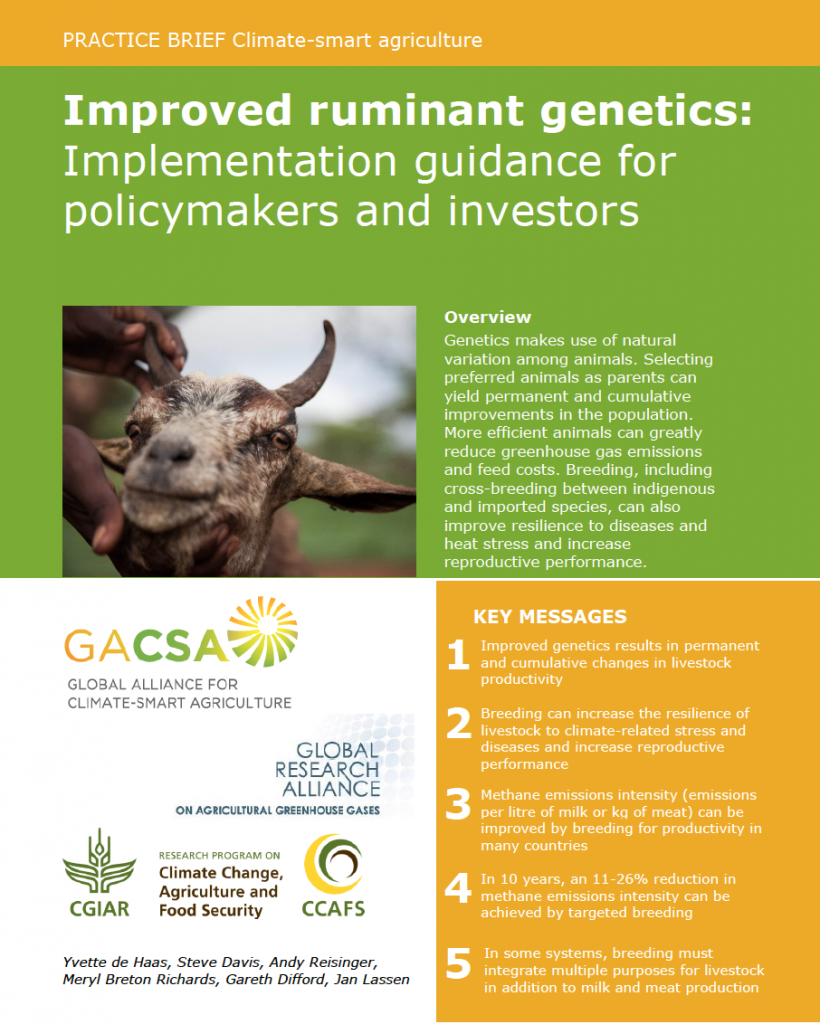The Animal Selection, Genetics & Genomics Network is a forum for scientists exploring the impact of genetic technologies for managing livestock greenhouse gas emissions.
Using genetics to mitigate methane emissions from ruminant livestock requires a significant resource of different breeds and species, and access to unique scientific skills. The Animal Selection, Genetics and Genomics Network (ASGGN) of the Livestock Research Group offers an environment for scientists from around the world to share information and data. Follow the network on twitter @ASGGN_GRA.
Achievements by Network members are:
 The publication of a practice brief in partnership with CCAFS on improved ruminant genetics for productivity and climate change outcomes
The publication of a practice brief in partnership with CCAFS on improved ruminant genetics for productivity and climate change outcomes- The submission of a paper on ‘Phenotypes to genetically reduce greenhouse gas emissions’
- The publication of a paper in Animal (Volume 9, Issue 9), ‘Animal board invited review: genetic possibilities to reduce enteric methane emissions from ruminants’
- The set-up of a Feed and Gas Working Group as part of the International Committee for Animal Recording (ICAR), focused on information exchange relating to recording and using dry matter intake data and methane outputs data.
- The Enteric Flagship project aims to develop microbial and genomic predictors for differences in methane emitted by different cattle species from different production systems, across the globe. By making use of Genotyping-by-sequencing, a high-throughput technology that optimises processing time and cost, the microbial profile of thousands of animals can be obtained from rumen samples. Collaborators are welcome – more information can be found here.
The Network is focused on:
- Common protocols for the measurement of individual methane emissions (and associated traits, or at least calibrations of measurement differences between countries)
- Co-measurement of appropriate correlated and productive traits that could serve as proxies measured on a large (national) scale
- Formalised protocols for the collection and storage of data (including direct and indirect phenotypes, DNA, and rumen samples (if available)) from all animals measured
- Criteria for data sharing, combining and analysis (including meta-analysis among all contributing parties).
The Network is also looking at developing a potential study on breeding goals and how they differ globally, and developing a better biological understanding of heritability. It is also interested in the role of genetics in adapting to climate change, including identifying knowledge gaps for further research.
In 2018, the Network held a meeting in the margins of the World Congress on Genetics Applied to Livestock Production in Auckland, New Zealand.
Contact:
For more information about the Animal Selection, Genetics & Genomics Network, please contact Coordinator: Suzanne Rowe ([email protected]).
